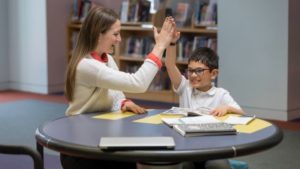By establishing basic infrastructure and preparing teachers with a basic degree of digital proficiency, the first Information and Communications Technology (ICT) Masterplan created the groundwork for schools to leverage ICT in teaching. Since the first ICT Masterplan in 1997, several rounds of upgrades have occurred, including the ICON email system, the installation of broadband Internet in schools, and, more recently, the Ministry of Education, Singapore (MOE development )’s of the Student Learning Space (SLS) – an online platform containing tools and curriculum-aligned resources for students to reinforce their learning at their own pace.
Today, students and teachers are not only given the essential ICT hardware and software programs but are also given professional development on how to use ICT in the classroom. We’ve learned how to use ICT more effectively to enhance and facilitate students’ learning since the first Masterplan. Teachers can now simply go from face-to-face to online learning.
The Pandemic’s Impact on Blended Learning
The epidemic has expedited the pace and timescale for online learning by providing a sudden catalytic push for ICT. As teachers were required to embrace and incorporate ICT into their lesson plans, he claims that focus was redirected to the usage of ICT in schools. Our approach to blended learning has evolved as a result of this.
As schools transitioned to full home-based learning (HBL), issues about accessibility and e-pedagogy developed, prompting the Personalized Digital Learning Programme to be accelerated (PDLP). To better assist HBL, the PDLP has been accelerated by a few years, and by the end of 2021, all secondary school pupils will be equipped with a personal learning device
During the HBL time, SLS was heavily used because features like the Interactive Thinking Tool and the ability to build a variety of questions and quizzes allowed teachers to add a creative touch to their lectures and find new ways to engage their students online. The curriculum-aligned resources on SLS also allowed students to revisit topics and concepts discussed in class, as well as assist teachers in lesson planning.
The promise of online and mixed learning has been felt more honestly as a result of the prolonged pandemic scenario. It just goes to demonstrate that the country’s investment in infrastructure and teacher training has paid off after more than two decades of ICT use in classrooms. While many people were unaware of these efforts before, ICT has now emerged as another important medium of instruction as blended learning becomes a part of Singapore’s curriculum.
Taking on the Problems Head-on
There are three sorts of interactions inherent in effective online courses, according to the literature in this field: learner-to-learner interaction, learner-to-content contact, and learner-to-instructor interaction.
Various forms of interactions that can be found in online courses
Putting online learning into practice has its own set of difficulties. There are three sorts of interactions inherent in effective online courses, according to the research in this field: learner-to-learner interaction, learner-to-content interaction, and learner-to-instructor contact.
While students can engage in learner-to-instructor exchanges, two major obstacles of online learning are students’ engagement (learner-to-content) and the lack of peer contact (learner-to-learner).
Students’ engagement levels, as well as their socioemotional well-being, can be affected by a lack of interaction with peers during complete online learning. In this sense, blended learning may be the answer because it includes face-to-face connection and can compensate for the drawbacks of complete online learning.
Virtual classrooms, on the other hand, have shown to be difficult for younger pupils to navigate, and even older students have struggled to stay engaged for lengthy periods of time.
So, what can be done about these problems?
Efforts to Advance Blended Learning are Being Strengthened
To address these issues, Teachers have to pay greater attention to the design of classes, take into account different learning styles, and give diverse and more bite-sized means of accessing material and allowing students to respond. As we move forward with blended learning, we must remember that, while ICT is vital, the concerns for designing online learning environments that effectively engage students are more crucial, but also more challenging.
Teachers and students will need to constantly learn new skills and stay current with technology, whether they are teaching at home, in a hybrid setting, or in a face-to-face setting. The fundamental purpose of implementing blended learning is to ensure that learning is not disrupted due to any unanticipated situations. The importance of continuing to improve online and mixed learning even beyond COVID-19.
It is now even more critical to continue our research efforts in order to better understand how to improve our online teaching pedagogy. We also need to understand how to make blended learning even more effective in the local context. What I’d like to see in the future is how machine learning and artificial intelligence may be used to improve teaching and learning for everyone.









